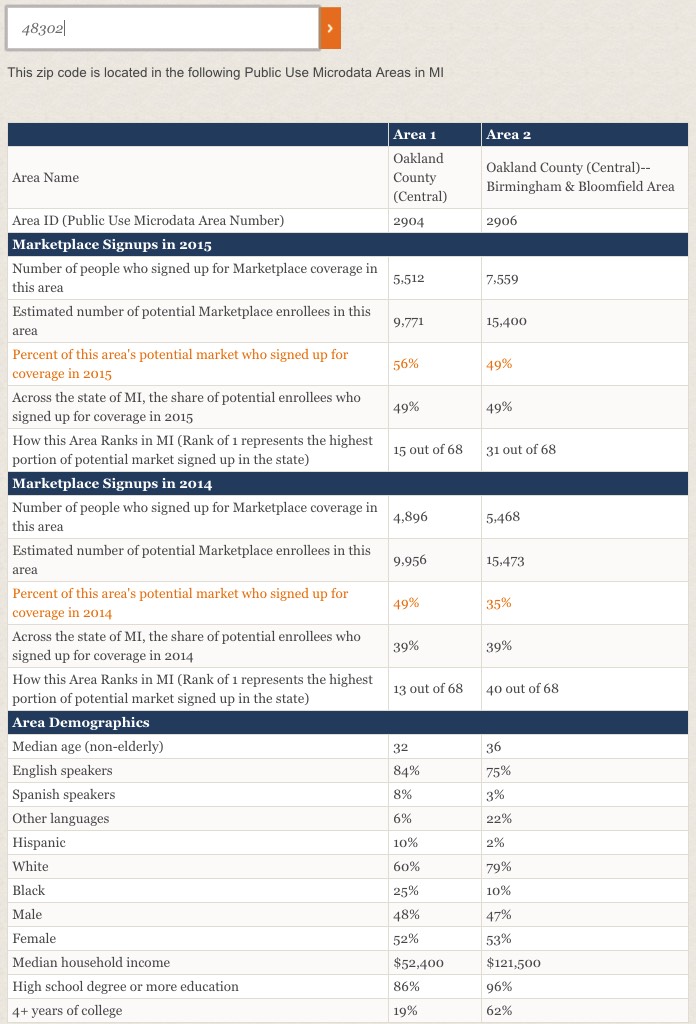Data Geekgasm! Kaiser Family Foundation breaks out what % of potential enrollees did so by zip code!
Last week I noted that the HHS Dept. has provided a handy zipcode-by-zipcode spreadsheet of Healthcare.Gov QHP enrollments across all 37 states using the federal exchange.
This has already been proven to be highly useful for things like this Enroll America map which breaks out private exchange enrollment by county, as well as my own entry which provides the tools for breaking out roughly how many people an adverse King v. Burwell ruling would lose their federal tax credits in each state/county/zip code (I've only done this by state; doing the actual county/zip code work would take a tremendous amount of work).
Well, today the Kaiser Family Foundation has whipped up another handy tool:
Compare Actual vs. Potential Signups By Local Area
The analysis below and zip code tool estimate the share of the potential Marketplace shoppers in geographic areas across the U.S. who enrolled in coverage in 2015.
Using newly-released federal Marketplace 2015 signup data by zip code, we are able to examine how signups varied within states that used Healthcare.gov. We translated zip code enrollment data into Public Use Microdata Areas (PUMA), which are statistical geographic areas defined for the tabulation and dissemination of certain census data that allow the enrollment information to be matched to federal survey data. PUMAs are built on counties and census tracks within states and each one contains about 100,000 people. (Enrollment data by zip code is not available for states operating their own Marketplaces.)
Unfortunately, all of this info is for the 37 HC.gov states only; the state-based exchanges aren't included (although some of those may provide their own version of this data).
For instance, here's how it breaks out for my own zip code. I'm not entirely sure I understand the "Area 1 / Area 2" distinction, but it looks like 48302 spreads across 2 different "Public Use Microdata Areas" so they've listed both. In any event, either 49% or 56% of the potential ACA exchange enrollees have done so this year.




